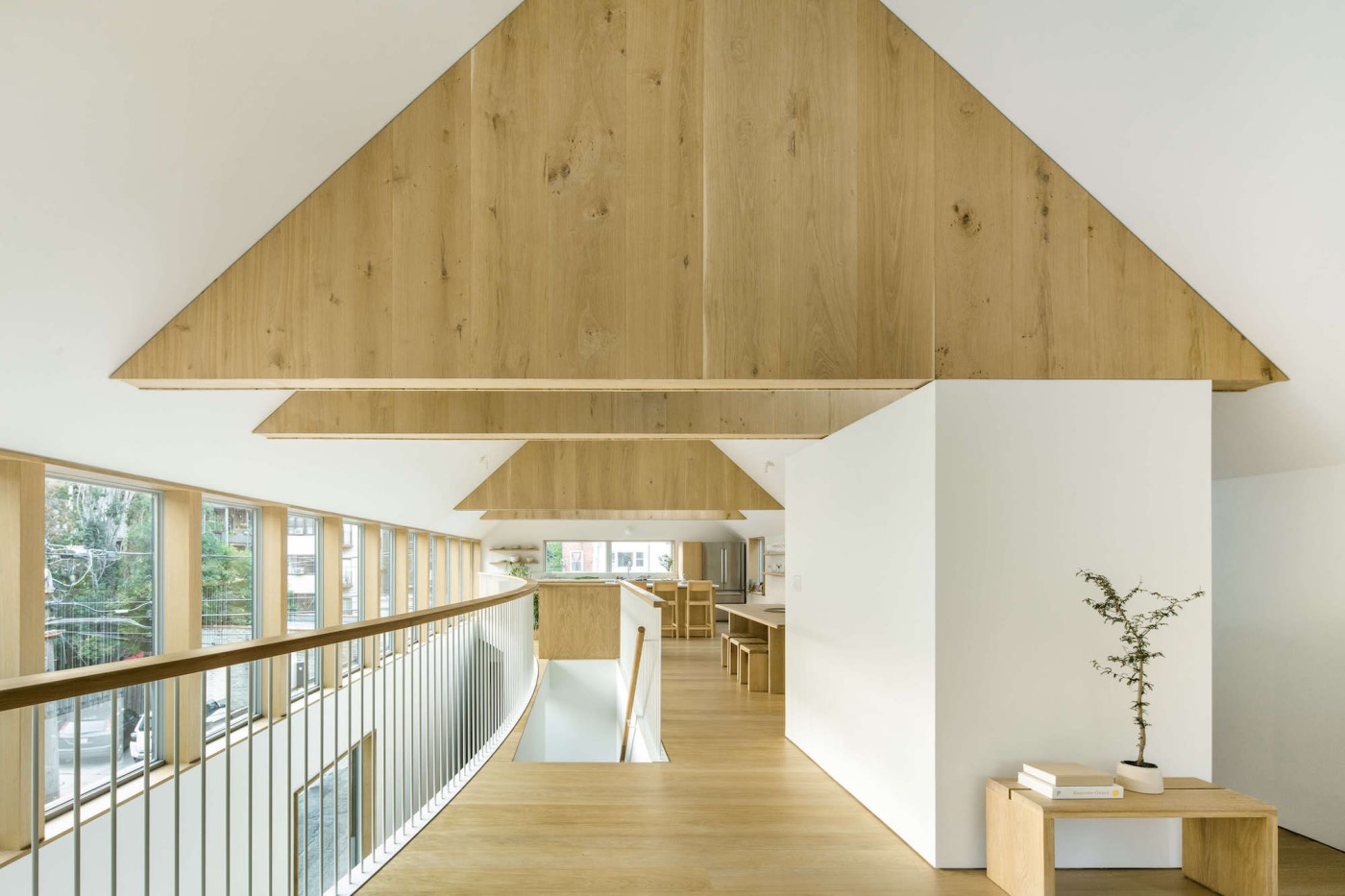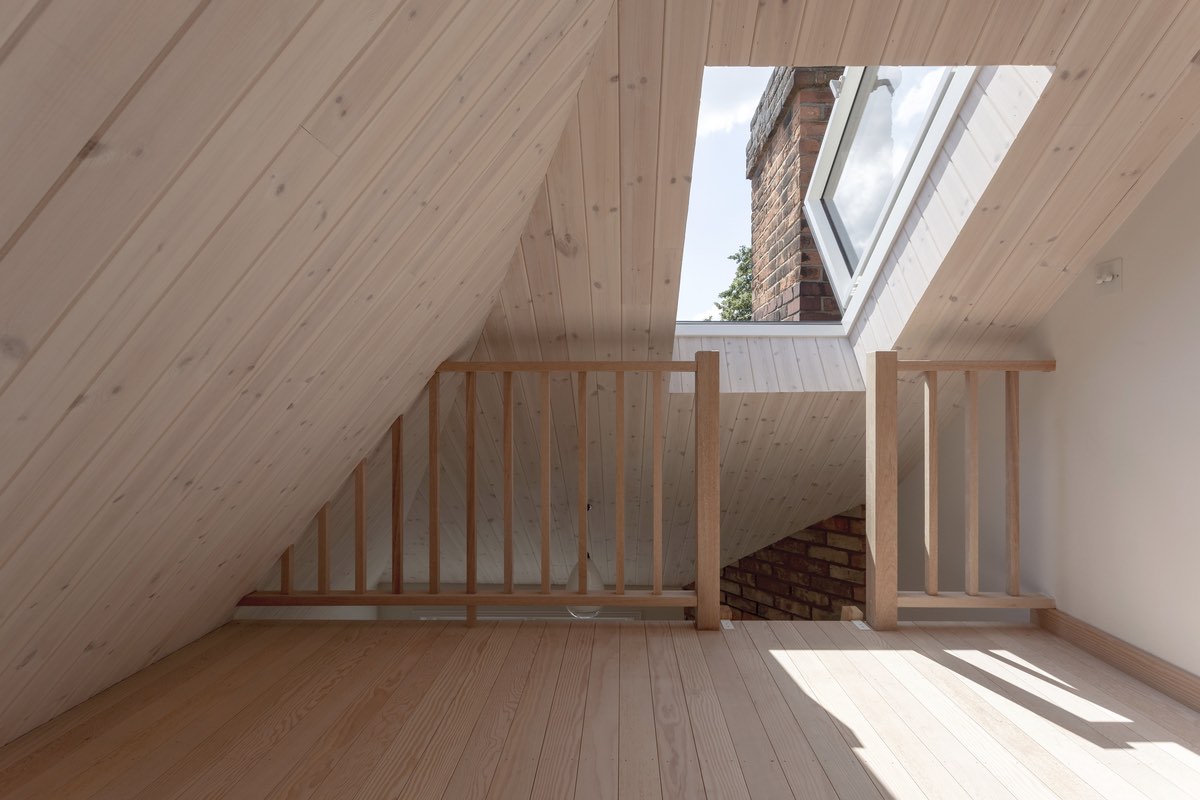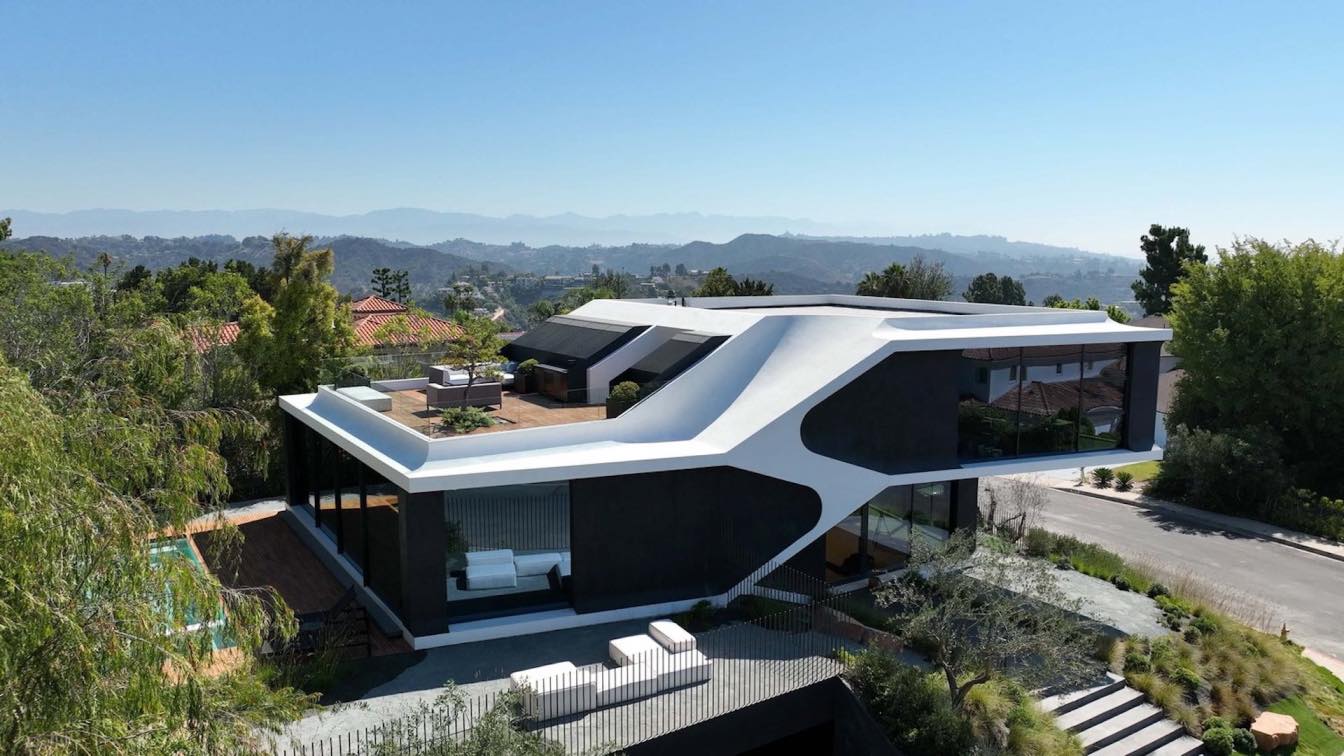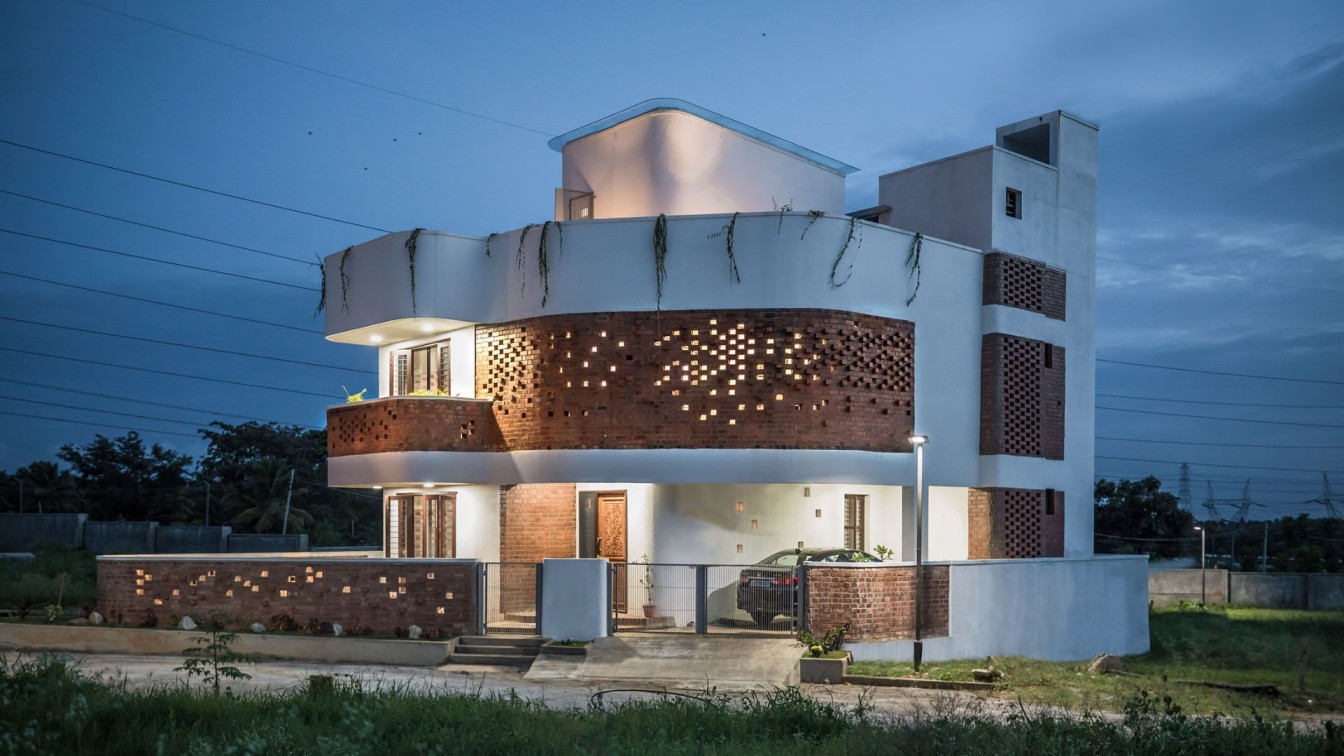The Chicago-based architecture practice Kwong Von Glinow led by Lap Chi Kwong and Alison Von Glinow completes Ardmore House, a single-family home located on a typical Chicago block at the intersection of a residential street and an alleyway.
Architect's statement: For this house bordering an alleyway on a traditional Chicago lot, Kwong Von Glinow flips the traditional residential section, arraying bedrooms on the first floor and living spaces on the second. This approach supports contemporary ways of living, emphasizing communal areas, interconnectivity, and flexible live-work spaces that receive ample natural light and engage the surrounding urban context.
 image © James Florio Photography
image © James Florio Photography
A curved double-height atrium runs lengthwise from front to back doors, creating an interior courtyard that vertically connects the common areas on the first and second floors. Defined by a large picture window and a curving wall, the courtyard offers an informal multi-purpose area where residents can relax, and their children can play.
 image © James Florio Photography
image © James Florio Photography
The design of the home balances privacy and openness on the urban site. Off the courtyard’s curving inner wall lie all of the home’s bedrooms, pushed away from the alleyway towards the neighboring lot. The two bedrooms nearer the front of the house have windows that look toward the neighbor’s Chicago brick wall, providing privacy from the view of the street and neighbors. The primary bedroom suite is located at the back of the home, overlooking a private garden.
 image © James Florio Photography
image © James Florio Photography
A stair tucked behind the courtyard’s curving wall leads to the second floor. The open plan is organized around four trusses that support the house’s Chicago balloon frame. These trusses distinguish five areas set around the curve of the balustrade: the kitchen, the island, the dining room, the powder room, and the living room. Throughout, a restrained colors and materials palette—white walls and white oak wood floors, trusses, and furnishing—draws attention to the qualities of the spaces themselves. All of the shared and public spaces on the second floor are oriented towards a ribbon window that spans the length of the interior courtyard. The 56-foot-long window floods the home with natural light and opens panoramic views that capture the fullness of the surrounding neighborhood: century-old trees, the back balconies and fire-escapes of neighboring buildings, and streetlamps with their meandering cabling.
 image © James Florio Photography
image © James Florio Photography
The exterior of the home engages the neighborhood’s traditional vernacular style while reflecting the organization of the interior spaces. The design shifts the facade hierarchy from the street to the alleyway, the most urban of the contexts. The street-facing facade has a row of half-height ribbon windows along the second floor and a single door on the first level, maintaining privacy for the front bedroom. On the alleyway side, floor-to-ceiling windows on the second floor and a large picture window facing out to the alleyway from the interior courtyard open the interiors to the urban surroundings.
 image © James Florio Photography
image © James Florio Photography
The exterior materials approach emphasizes the sectional flip and lends visual rhythm to the monolithic building. The house sits atop a concrete base with a dual-color Accoya wood rain screen system. The bottom half of the first level is clad in grey wood, while black wood lines the top half of the first level and all of the second.








































 Basement Floor Plan
Basement Floor Plan
 Ground Floor Plan
Ground Floor Plan
 Second Floor Plan
Second Floor Plan
 Site Plan
Site Plan
About Kwong von Glinow
Kwong Von Glinow is an award-winning Chicago-based design practice that believes people should enjoy architecture. Their work translates forward-looking architectural concepts into playful designs with broad appeal. Taking an optimistic and explorative approach, KVG focuses on creating innovative living environments, places for cultural engagement, urban public space, and contemporary workspaces. The office was founded in 2017 by Lap Chi Kwong and Alison Von Glinow and has delivered projects ranging from single-family homes to multi-family residential buildings, public and cultural spaces, exhibitions, and designed objects.
The firm’s current projects include the renovation of a 12,000-square-foot Howard Van Doren Shaw home in Highland Park, IL for an art collector; the inaugural Designing a Better Chicago Riverwalk pavilion to be built in summer 2021; and a community center and housing project in New York. They recently completed Ardmore House—a single family home in Chicago—and collaborated with HHF to design the new Swiss Consulate Chicago at the Hancock Tower.
Kwong Von Glinow has been recognized nationally and internationally for design excellence. The office received the 2018 Architectural League of New York Prize for Young Architects and was recognized by Wallpaper* Magazine as one of the top 20 Emerging Architecture Practices of 2017. In 2017, the firm won 1st prize in two major international housing competitions and one infrastructural regeneration competition: the 2017 New York Housing Challenge for Table Top Apartments, the 2017 Hong Kong Housing Challenge for Towers within a Tower, and the 2017 Chicago Prize for Grand Lattices.
The practice also received a 2019 Graham Foundation Grant for their exhibition project Smuggling Architecture, exhibited at the Swiss Architecture Museum in Basel, Switzerland. KVG’s projects have been acclaimed by leading voices in architecture including AIANY and CNN Style, which called KVG’s Towers within a Tower a “bold vision of vertical space in a city whose skyline has been defined by it.”





